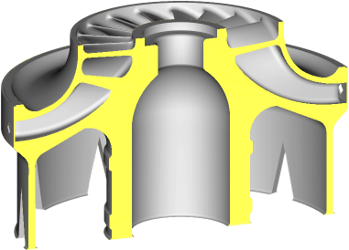Zach Murphree, Vice President of Global Sales & Business Development at VELO3D, will be giving the topic keynote on Industrial Metal AM at Additive Manufacturing Strategies 2022, March 1-3. He will also be participating in Panel 3: Emerging markets for large AM parts.
When additive manufacturing (AM) emerged, it came with a promise that it would enable design freedom, helping organizations achieve new heights of innovation. Engineers would be able to manufacture any part they could design, no matter how complex. More than any other AM technology, the expectations and promise of metal AM were the highest. However, that promise was broken and metal AM fell short of expectations. Rather than design freedom, engineers faced design restrictions, and were forced to comply with the limitations of conventional AM systems. Meanwhile, most suppliers of AM technology have put the onus on engineers to design around its limitations, rather than build AM solutions that could fulfill the original promise. This was done by introducing design for additive manufacturing (DfAM) as a requirement for building parts.

A metal 3D printed part with support structures.
All engineers have a deep understanding of the critical value of DfX—X could be manufacturing, service, cost, obsolescence, reliability, or some other requirement. X stands for the real world. Engineers cannot just design for function—they must design for the challenges of reality. Only then can those designs be implemented in the real world, with all its imperfections and practical limitations. Knowing how to embed DfX in their designs is what separates the engineering professionals from the amateurs.
However, the AM in DfAM is not just another variable of the X in DfX, and we must be careful not to confuse the two. AM limitations cannot be confused with “just another aspect of real life.” AM is a limited manufacturing technology, it has an inherently high cost structure, it has much lower accuracy than machining, it produces lower quality surfaces, and it is not trivial to qualify its material properties. The only reason to use AM is because it allows an unprecedented degree of design freedom. But for AM to establish itself and expand its adoption, as well as to make good on its original promise, the design freedom it provides must be incomparable to any other manufacturing technology.

The same part without support structures.
Replacing the limitations of CNC machining with a new set of geometrical limitations and expecting engineers to start aligning their imagination around those new limitations is naïve and self-centered. AM must demonstrate how it provides value in a massive way before it can expect engineers to design according to its limitations.
The compromises that DfAM introduces include adding supports, changing geometries, and making other modifications that meet the restrictions of AM so the part can be produced. These compromises don’t just impact the manufacturing of the part, they alter performance, impact reliability, and require excessive post-processing. Most importantly, DfAM as we know it compromises the design intent of the engineers building the parts.
AM, specifically laser powder bed fusion, can deliver exceptional benefits in terms of performance for the parts it’s used to manufacture. However, DfAM tells engineers that to adopt the new technology they also need to adopt a new design methodology to overcome the restrictions of most AM technologies. For most engineers this is a non-starter. In the words of Joris Peels at 3Dprint.com, DfAM is like making people learn Italian before they can eat pizza.
DFM is essential but should not be conflated with DfAM. You don’t want engineers to design parts in a vacuum. Even if they are great ideas, they are more likely to fall flat in the real world. But for AM to reach maturity and increase its addressable use-cases, we need to unlock design freedom rather than restrict it through DfAM.
Subscribe to Our Email Newsletter
Stay up-to-date on all the latest news from the 3D printing industry and receive information and offers from third party vendors.
You May Also Like
Profiling a Construction 3D Printing Pioneer: US Army Corps of Engineers’ Megan Kreiger
The world of construction 3D printing is still so new that the true experts can probably be counted on two hands. Among them is Megan Kreiger, Portfolio Manager of Additive...
US Army Corps of Engineers Taps Lincoln Electric & Eaton for Largest 3D Printed US Civil Works Part
The Soo Locks sit on the US-Canadian border, enabling maritime travel between Lake Superior and Lake Huron, from which ships can reach the rest of the Great Lakes. Crafts carrying...
Construction 3D Printing CEO Reflects on Being Female in Construction
Natalie Wadley, CEO of ChangeMaker3D, could hear the words of her daughter sitting next to her resounding in her head. “Mum, MUM, you’ve won!” Wadley had just won the prestigious...
1Print to Commercialize 3D Printed Coastal Resilience Solutions
1Print, a company that specializes in deploying additive construction (AC) for infrastructure projects, has entered an agreement with the University of Miami (UM) to accelerate commercialization of the SEAHIVE shoreline...





























